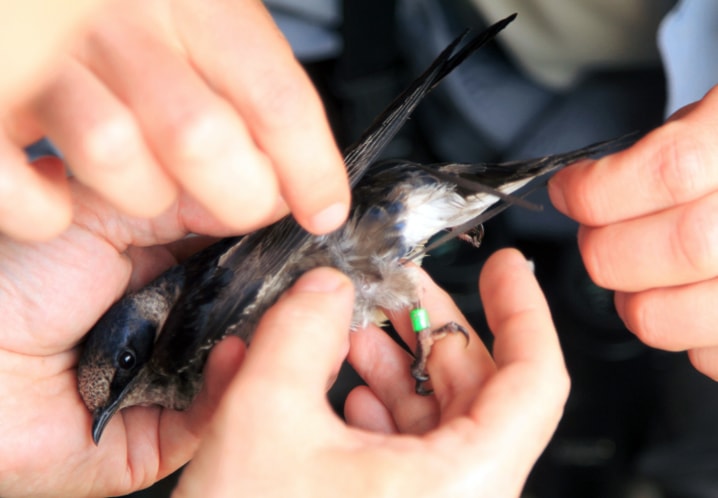Some purple martins have made their way back to Central Alberta after a winter down south, and for the first time they are coming back with information to share about their time away.
Last year, researchers from York University came to the Ellis Bird Farm northeast of Red Deer and attached geolocator “backpacks” onto 22 of the birds. The one-gram device records daily flight levels, with researchers later able to determine daily approximate positions based on times of local sunrises and sunsets along the migratory trail.
On May 15, Martin No. 125 — or, more colourfully, Amelia, after the aviation pioneer — was recaptured upon her return to the bird farm for spring breeding. The information gleaned from Amelia shows just how hard she worked travelling to and fro her overwintering spot in central Brazil.
In total, the bird logged 22,300 km over the course of the year. Her official migration distance of 21,000 is the longest such distance that the York University researchers have ever tracked for a purple martin. The average distance for previously-tracked birds is about 14,000 km.
“(The researchers) had no idea that they’d travel that far. They are extremely long-distance migrants,” explained biologist Myrna Pearman at the Ellis Bird Farm.
The data showed that Amelia had three different wintering roosts in Brazil, east of the heart of the Amazon rainforest where other martins have been tracked to. The bird left South America quite late, on April 25, but rocketed back to Ellis Bird Farm in just 21 days at an average of 600 km/day.
Martin populations in northern breeding ranges are declining, and the researchers’ study is being done to determine possible causes for the decrease. Fifty birds were fitted with the backpacks last year at Ellis Bird Farm and another site. Four of the birds have been discovered so far this year.
Pearman said the new data has been nice to share with visitors and school groups.
“People are truly in awe to think that the bird that they’re looking at here on this box travelled this distance. It’s been a great educational tool for us,” she said.
More of the birds, which are the largest of North American swallows, will be fit with geolocators this year. The project has received grant funding from the Red Deer and District Community Foundation and the Alberta Sport, Recreation, Parks and Wildlife Foundation.
mfish@www.reddeeradvocate.com
